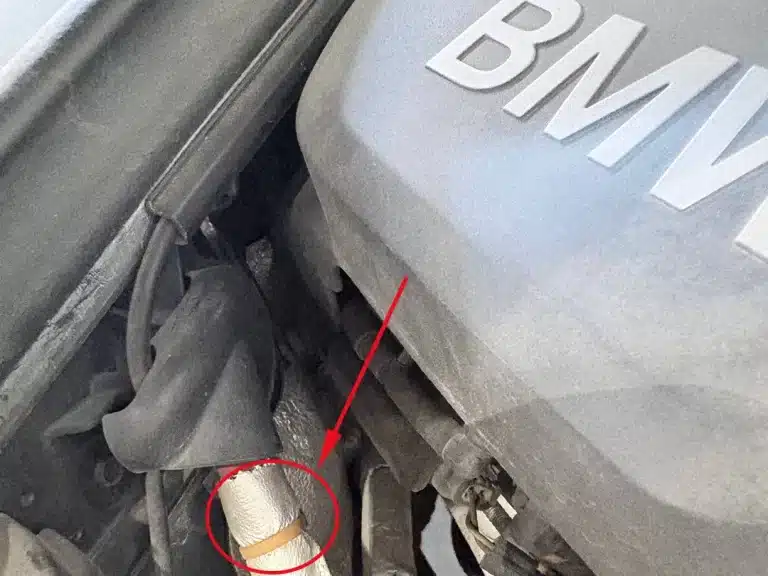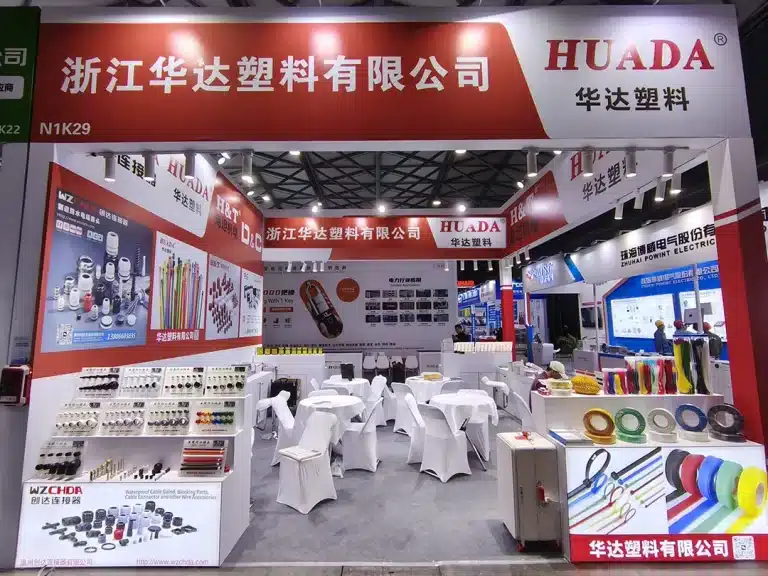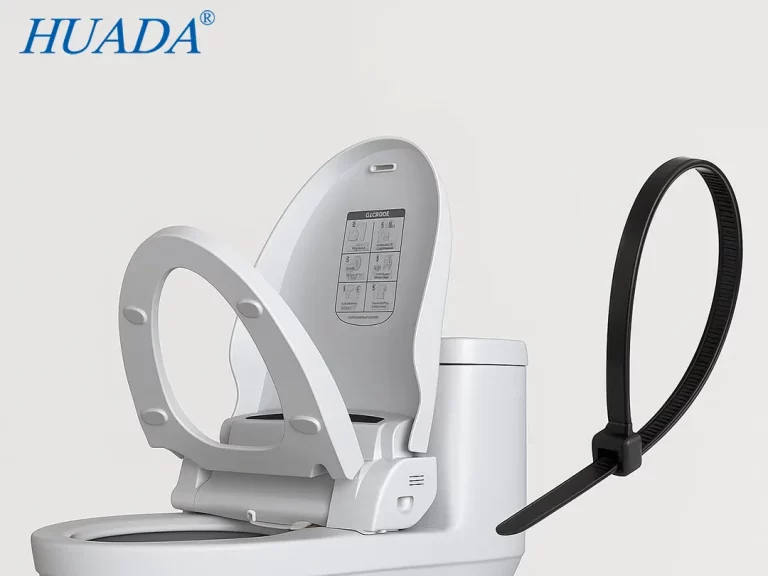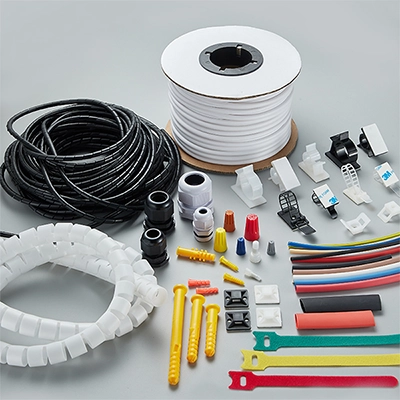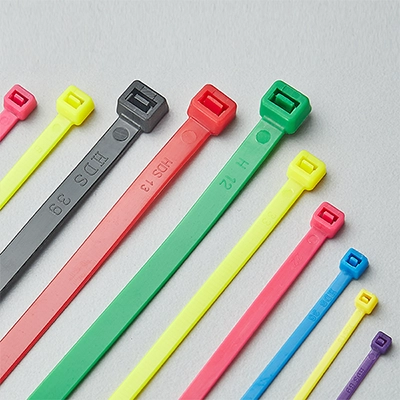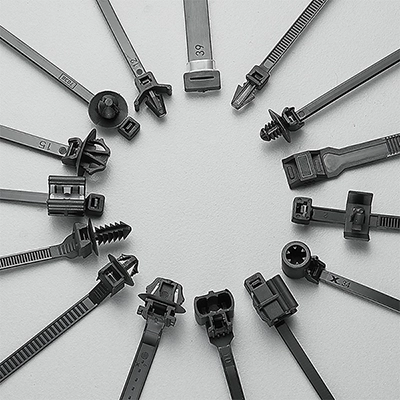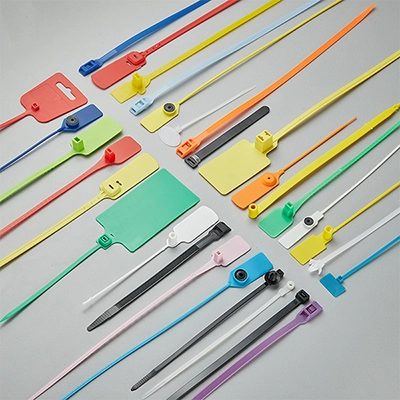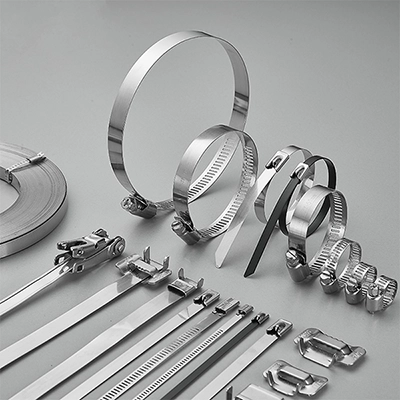For cable tie buyers, it’s important to know how to quickly check product quality even without professional testing equipment. In this article, we’ll show you how to assess cable tie quality using four simple steps: Look, Measure, Pull, and Bend.
This easy method helps you catch 90% of potential quality issues before the cable ties even enter your warehouse, saving you time, reducing risk, and improving long-term reliability.
1. Look: Visual Quality Check in 3 Minutes
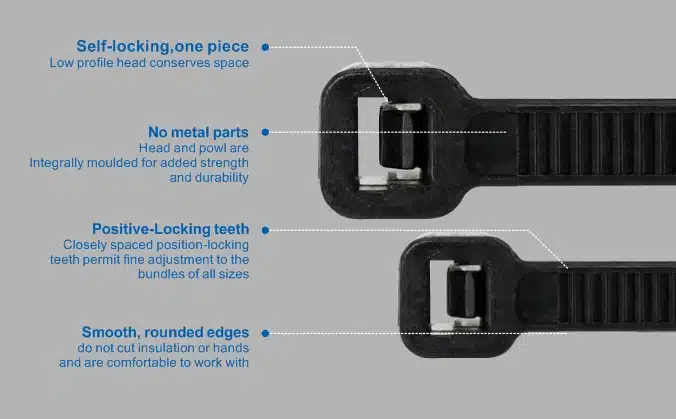
What to check:
Examine the surface of the cable tie. It should be smooth, glossy, and free from visible defects such as bubbles, cracks, spots, notches, or flashing.
Nylon cable ties are typically made by injection molding. However, if the manufacturing process is poorly managed or the cable tie manufacturer lacks experience, common defects—like air bubbles, flow marks, or excess plastic (flashing)—can appear. These are also the easiest issues to spot with the naked eye.
2. Measure: Manual Size Tolerance Check
Standard: QB/T 4494-2013 (China Industry Standard for Nylon Cable Ties)
| Project | Data | Tolerance |
| Cable Tie Width | As labeled | ±0.1mm |
| Cable Tie Length | L1≤300 mm | ±2% |
| 300mm<L1≤600 mm | ±1.5% | |
| L1>600 mm | ±1% |
Use a standard ruler or a caliper to check the actual width and length (from the tie head to the tip).
Example: For a cable tie labeled 2.5×100mm, the width should be between 2.4 and 2.6 mm, and the length should fall within 98–102 mm.
3. Pull: Basic Locking Function Check
What to check:
Insert the tail of the cable tie through the head and tighten it as usual. Then try to pull it back outward. If it does not slide back, the locking mechanism is working correctly.
This step is not a formal tensile strength test—it simply checks whether the tie locks properly without slipping. If the tie can be pulled out after locking, it means the teeth aren’t engaging securely, and the tie cannot be used at all. This is a critical failure!
Optional tensile test:
If you want to roughly test tensile strength, you can simulate real-world stress using known weights. For example, a 2.5mm-wide cable tie is typically rated for about 80N (~8kg). You can tie it around an object of similar weight—like two 4L bottles of cooking oil—and lift it by the tie. If the tie holds without breaking, its tensile strength is acceptable for basic use.
4. Bend: Simple Flexibility and Toughness Test
What to check:
Manually bend the cable tie back and forth 10 times. A high-quality cable tie should not break and should show no whitening or cracks at the bend point.
If you’ve ever used cable ties in cold weather—especially in cold regions—you may have noticed that they become brittle and snap easily. That’s why this bending test is a simple but useful way to check toughness and cold resistance.
For deeper testing:
You can place the ties in a refrigerator or freezer to simulate low-temperature storage before performing the bend test again. Note that different cable tie materials have different cold-resistance limits:
- Standard nylon 66 cable ties: minimum usable temperature: -15°C
- Cold-resistant cable ties: minimum usable temperature: -35°C
Summary: A Quick and Practical Way to Inspect Cable Tie Quality
By following these four simple steps—Look, Measure, Pull, and Bend—you can quickly screen the quality of cable ties in just a few minutes, even without professional equipment.
If you’re also concerned about temperature resistance, you can use household tools like refrigerators or freezers to perform basic cold tests. For more reliable results, you can also ask the cable tie manufacturer to provide their factory inspection reports to confirm performance data in advance.
